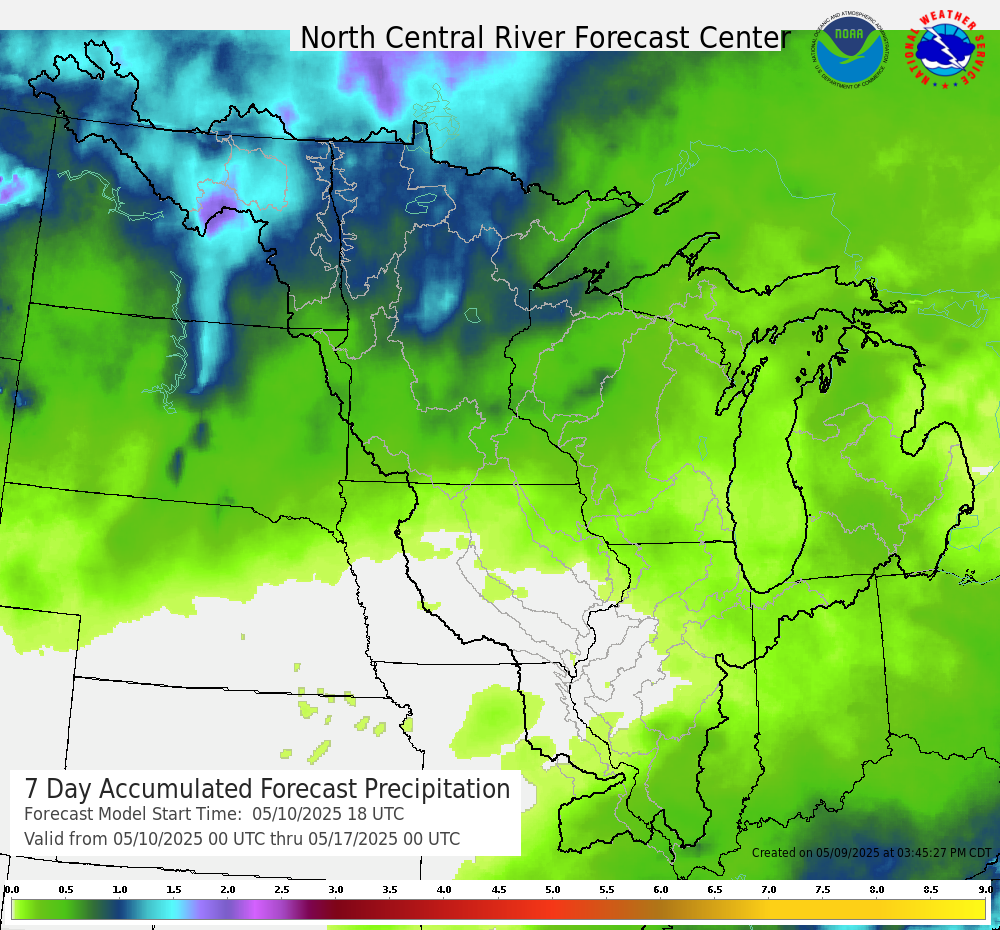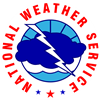
A second Pacific cold front will cross the Pacific Northwest Wednesday followed by another atmospheric river. Each of these features will bring additional periods of gusty winds, mountain snow, and heavy to excessive rainfall with renewed flooding. Heavy lake effect snow continues into Tuesday east of Lakes Erie and Ontario. Read More >
Flood Outlook issued March 13, 2025 - Final Outlook
Key Points
What Has Changed
Seasonal Flood Outlook Probability Table for River Forecast Locations
Seasonal Flood Outlook Graphics (select site on map, select 'Full Gauge Page' on top of hydrograph, then scroll down)
Hydrographs with the Official Forecast River Forecast. The forecasts use 48 hours of precipitation April 1 to Sep 30 and 24 hours of precipitation from Oct 1 to March 31.
Feb 13, 2025 Slides
Feb. 27, 2025 Slides
Mar. 13, 2025 Slides
If you have any questions or comments about this spring flood outlook or the new river forecast website please contact:
Sarah Marquardt
Senior Service Hydrologist
National Weather Service Milwaukee
sarah.marquardt@noaa.gov
Flood Risk Factors
Current Conditions (some images auto update and conditions may differ from when the spring flood outlook was issued)
Flood Risk Factors (as of 3/13/25)
Snow Pack
There is little to no snow across southern Wisconsin, which is a large factor in reducing the flood risk.
Frost Depth
There is 0 to 32 inches of frost in the ground at this time. Some areas are completely thawed and can absorb rainfall helping to mitigate flooding. In areas that remain frozen, the top few inches is thawed.
Streamflow and River Levels
Precipitation since December 1 is 50-75% of normal across southern Wisconsin. Streamflow values are close to average across southern Wisconsin. As a result, there is some room in rivers to hold additional rainfall.
Soil Moisture
Soil moisture is in the 20-30th percentile across southeast Wisconsin where the precipitation deficits since the fall are the greatest. The U.S. Drought Monitor indicates Moderate Drought in southeast Wisconsin and parts of south-central Wisconsin. As a result, there is room for the ground to absorb water from melting snow and spring rain in southeast Wisconsin. This is another big factor in the reduced flood risk in that area.
Looking Ahead (images auto update)
| 7 Day Precipitation Forecast |
 |
Extended outlooks from the Climate Prediction Center:
 |
 |
 |
 |
 |
 |
How To Prepare Safety
Preparedness/Early Actions:
How To Stay Safe During a Flood:
Flood Risk and River Outlooks
Long Range Outlooks
Weekly Probability of Exceeding Flood Stage by Location. More information is here.
 |
 |
 |
 |
 |
 |
 |
 |
 |
 |
 |
 |
 |
 |
 |
 |
 |
 |
 |
 |
 |
 |
 |
 |
 |
 |
 |
 |
 |
10 Day River Outlook
Includes 10 days of precipitation, snowmelt, and temperature. These are automated forecasts with no human forecaster intervention that update twice per day. More information is here.
 |
 |
 |
 |
 |
 |
 |
 |
 |
 |
 |
 |
 |
 |
 |
 |
 |
 |
 |
 |
 |
 |
 |
 |
 |
 |
 |
 |
 |
Media use of NWS Web News Stories is encouraged! Please acknowledge the NWS as the source of any news information accessed from this site. |
 |